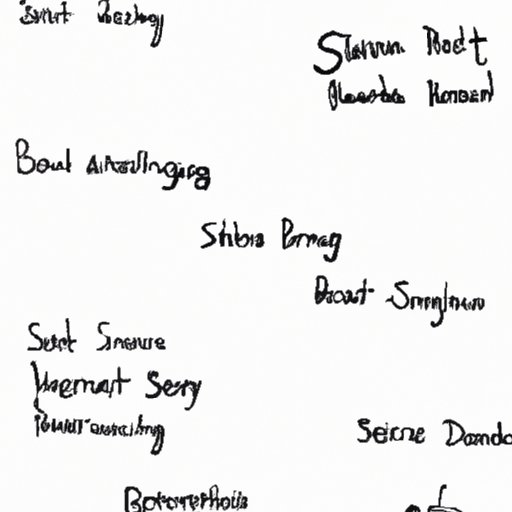Introduction
Fight scenes are a staple of many stories, and providing readers with an immersive experience is essential. Writing effective fight scenes can be a challenge, as there are many elements to consider when describing fighting in writing. From developing the setting to conveying the emotions of the characters, this article will explore the different steps necessary for effectively describing fighting in writing.
Develop the Setting
The setting of a fight scene is just as important as the fight itself. Describing the time of day, weather, and location can help to create an atmosphere that allows readers to visualize the scene. For example, if the fight takes place at night, it can be described as “the moonlight glinting off of the blades of the combatants” or “the darkness shrouding the fighters”. If the fight is taking place during a storm, the rain and wind can be used to create tension. The location of the fight is also important; a fight in a dark alleyway can be described differently than a fight in a brightly lit arena. These details can help to bring the fight scene to life.
Describe the Characters
When describing fighting in writing, it is important to include details about the characters involved. Physical characteristics such as height, weight, and facial features can help readers to envision the fighters. Additionally, personalities should be conveyed through their body language and dialogue. For example, a character who is calm and collected can be described as having “a steady hand and a cool gaze”, while a character who is enraged can be described as “fists clenched and eyes blazing”. Establishing the characters’ personalities before the fight begins can help to make the fight more engaging for readers.
Focus on Action
The action of the fight should be described in vivid detail. Instead of simply saying that one character punched another, use descriptive words to convey the movements of the fighters. Words like “lunged”, “swung”, or “jabbed” can give readers a better sense of the action. Additionally, descriptions of the impacts of the fight can help to draw readers into the scene. For example, “the force of the punch sent him sprawling to the ground”. Lastly, it is important to include descriptions of the emotions of the fighters. Fear, anger, and determination can all be used to add depth to a fight scene.
Include Dialogue
Dialogue can be used to bring a fight scene to life. Short lines of dialogue can add tension to the scene and show the characters’ reactions to the fight. For example, a character might shout “I won’t let you win!” as they launch an attack. Dialogue can also be used to reveal information about the characters or the stakes of the fight. Using dialogue can help to make a fight scene more dynamic and engaging for readers.
Show the Aftermath
Showing the effects of the fight on the characters can be just as important as the fight itself. Describing the physical toll the fight has taken on the characters can help to illustrate the intensity of the scene. Additionally, the aftermath of a fight can be used to show how the characters have changed. A character who was initially timid may become emboldened after a victory, while a character who was confident may be humbled after a loss. Showing the aftermath of a fight can add depth to the scene and provide insight into the characters’ motivations.
Conclusion
Describing fighting in writing can be a challenge, but with careful attention to detail it can be done effectively. Developing the setting, describing the characters, focusing on action, including dialogue, and showing the aftermath can all help to make a fight scene come alive for readers. With these tips in mind, writers can craft exciting and engaging fight scenes that draw readers in and keep them coming back for more.
(Note: Is this article not meeting your expectations? Do you have knowledge or insights to share? Unlock new opportunities and expand your reach by joining our authors team. Click Registration to join us and share your expertise with our readers.)
